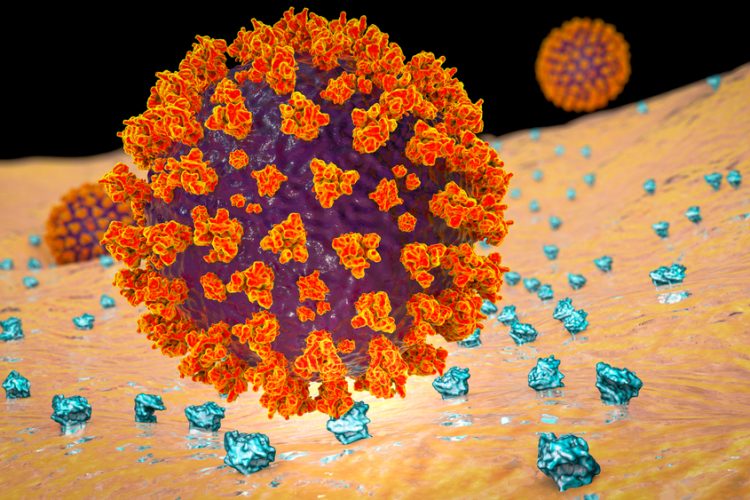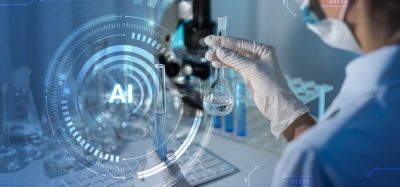Novel pseudo-virion probes to study SARS-CoV-2 viral entry
Posted: 18 September 2020 | Hannah Balfour (Drug Target Review) | No comments yet
The non-infectious quantum dot probes are designed to enable researchers to safely study interactions between the SARS-CoV-2 Spike (S) protein and human cells.


Researchers have developed SARS-CoV-2 nanoparticle probes that can be used to study fundamental interactions between the SARS-CoV-2 Spike (S) protein and human cells. Their quantum dot-conjugated SARS-CoV-2 S pseudo-virions can be used to safely study the novel coronavirus causing the COVID-19 pandemic without the risk of infection.
“We developed nanoparticle-based pseudo-virions that bind to the host cell and track themselves inside of cells without being contagious,” said Dr Eunkeu Oh, a US Naval Research Laboratory (NRL) biophysicist. “This opens an opportunity to expand the same strategy to various other infectious diseases.”
Collaborators from the NRL and National Center for Advancing Translational Sciences (NCATS), submitted their findings to ACS Nano.
The non-infectious probes are intended to study the interaction between the SARS-CoV-2 S protein and the human angiotensin converting enzyme 2 (ACE2) receptor which it binds to in order to enter human cells. Dr Mason Wolak, acting head of NRL’s Optical Nanomaterials Section, explained: ” Simply put, keeping the virus out of cells prevents it from replicating, propagating and exacerbating infection. The ultimate goals of the collaboration are to clarify the fundamental mechanisms by which SARS-CoV-2 causes infection and to screen and identify potential drugs to inhibit these mechanisms.”
The team said they were fascinated by the potency of the quantum dot nanoparticles to induce translocation of ACE2 from the cell membrane to the interior of the cell through a process called endocytosis. According to Dr Kirill Gorshkov, an NCATS research scientist, this suggests they have “a powerful system to track viral attachment and effects on the cell in real time, since these quantum dots are fluorescent”. He added that experiments to block endocytosis prevented internalisation of the quantum dot pseudovirus and ACE2 receptor complex.
The nanoparticle probes developed at NRL are comprised of multiple S protein subunits attached to the surface of a light-emitting quantum dot core.
“We refer to these probes as ‘Pseudo-virions’ because they approximate the shape of the SARS-CoV-2 virus while also mimicking their physiological interactions with human cells,” said Wolak. “Light emitted from the Pseudo-virions allows spatiotemporal tracking of their interaction with human cells.”
Wolak added that binding to ACE2 is the initial step of cellular infection, so successfully inhibiting this process is an extremely high priority in the search for therapeutic interventions to mitigate the impact of the pandemic.
Using their probes, NRL and NCATS are currently designing and testing the feasibility of high-throughput cellular imaging tests to screen entire libraries of therapeutic agents for inhibition of S/ACE2 binding and internalisation. These tests would allow for screening of up to 1,536 drug targets per experiment.
The team plan to investigate the mechanism that increases infectiousness of SARS-CoV-2 with mutated S proteins, as well as exploring the possibility of using the pseudo-virions for site-specific intracellular drug delivery for purposes of disrupting SARS-CoV-2 replication mechanisms.
Wolak said, “It is very important to note that the Spike-containing pseudo-virion has potential for broad application of intracellular drug delivery to combat not only COVID-19, but any disease that targets cells with ACE2 receptors.”
Gorshkov concluded: “I hope this story serves to engage young minds into the realm of what is possible when people work together, both scientifically and otherwise. By forging these strong relationships, we can synergize our efforts and come to novel solutions from completely different perspectives and viewpoints.”
Related topics
Analytical Techniques, Disease Research, In Vitro, Protein, Proteomics, Research & Development
Related conditions
Coronavirus, Covid-19
Related organisations
National Center for Advancing Translational Sciences' (NCATS), US Naval Research Laboratory (NRL)
Related people
Dr Eunkeu Oh, Dr Mason Wolak








